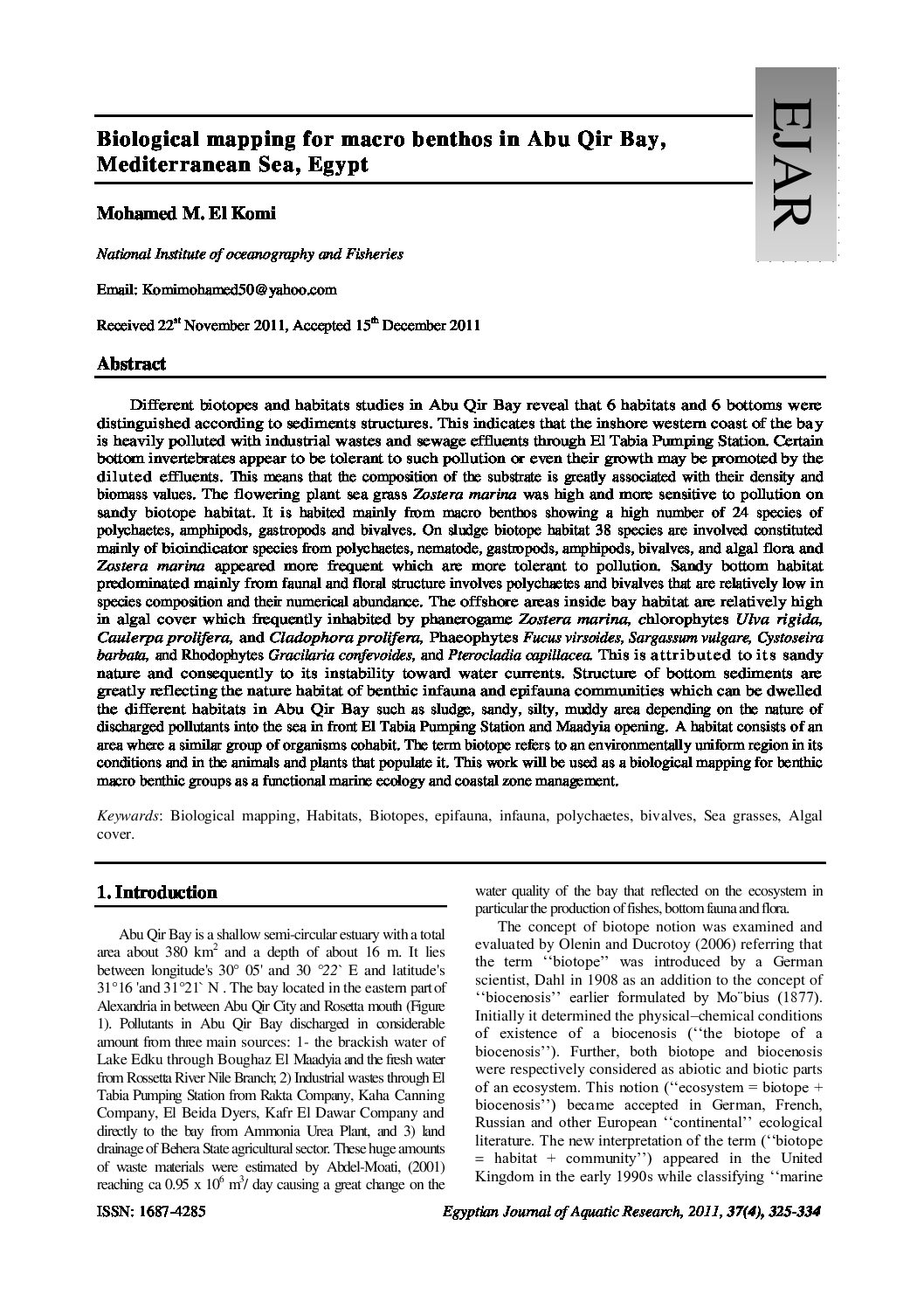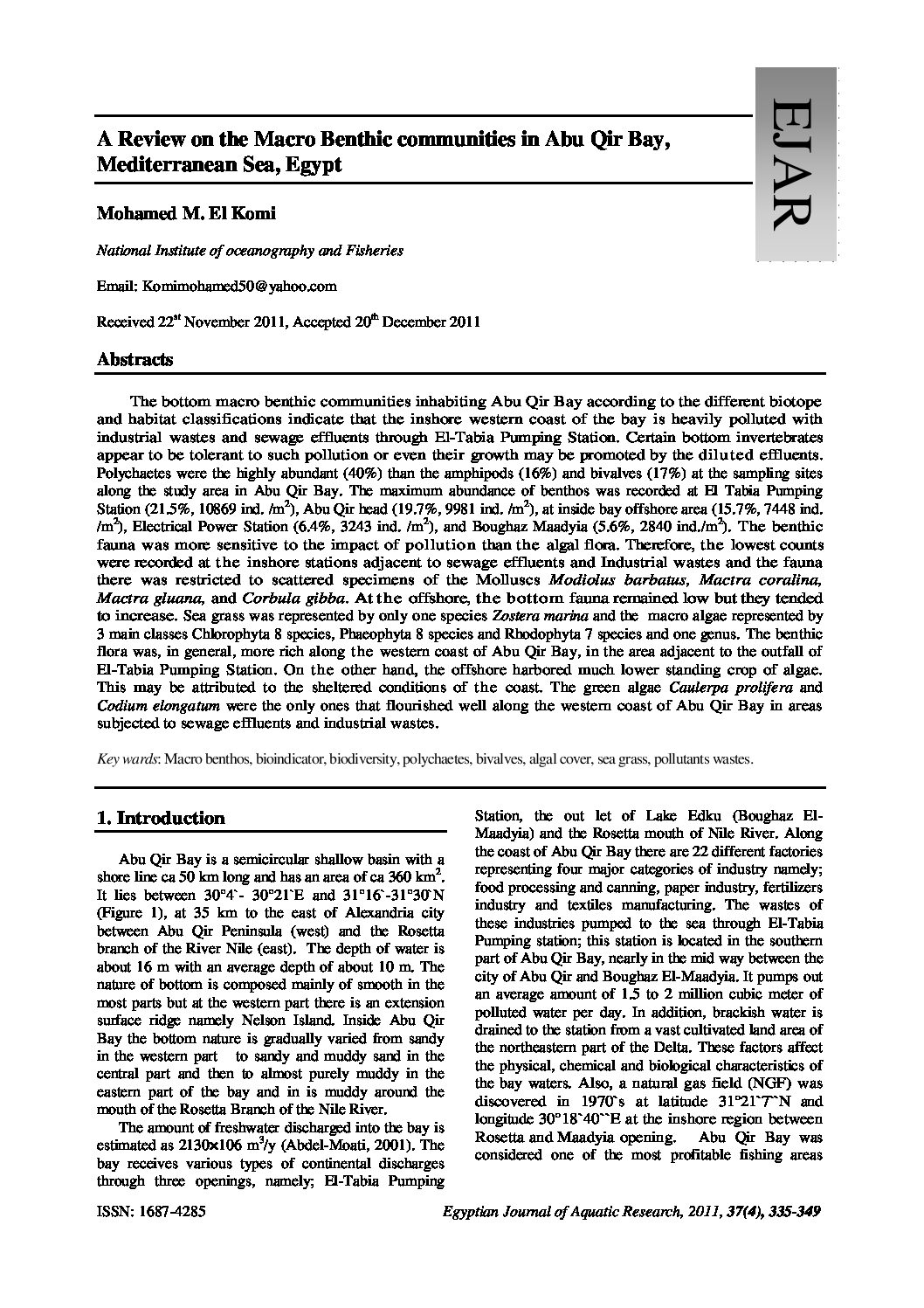Categories
vol-37Biological mapping for macro benthos in Abu Qir Bay,
Mediterranean Sea, Egypt
Mohamed M. El Komi
National Institute of oceanography and Fisheries
Email: [email protected]
Received 22st November 2011, Accepted 15th December 2011
Abstract
Different biotopes and habitats studies in Abu Qir Bay reveal that 6 habitats and 6 bottoms were
distinguished according to sediments structures. This indicates that the inshore western coast of the bay
is heavily polluted with industrial wastes and sewage effluents through El Tabia Pumping Station. Certain
bottom invertebrates appear to be tolerant to such pollution or even their growth may be promoted by the
diluted effluents. This means that the composition of the substrate is greatly associated with their density and
biomass values. The flowering plant sea grass Zostera marina was high and more sensitive to pollution on
sandy biotope habitat. It is habited mainly from macro benthos showing a high number of 24 species of
polychaetes, amphipods, gastropods and bivalves. On sludge biotope habitat 38 species are involved constituted
mainly of bioindicator species from polychaetes, nematode, gastropods, amphipods, bivalves, and algal flora and
Zostera marina appeared more frequent which are more tolerant to pollution. Sandy bottom habitat
predominated mainly from faunal and floral structure involves polychaetes and bivalves that are relatively low in
species composition and their numerical abundance. The offshore areas inside bay habitat are relatively high
in algal cover which frequently inhabited by phanerogame Zostera marina, chlorophytes Ulva rigida,
Caulerpa prolifera, and Cladophora prolifera, Phaeophytes Fucus virsoides, Sargassum vulgare, Cystoseira
barbata, and Rhodophytes Gracilaria confevoides, and Pterocladia capillacea. This is attributed to its sandy
nature and consequently to its instability toward water currents. Structure of bottom sediments are
greatly reflecting the nature habitat of benthic infauna and epifauna communities which can be dwelled
the different habitats in Abu Qir Bay such as sludge, sandy, silty, muddy area depending on the nature of
discharged pollutants into the sea in front El Tabia Pumping Station and Maadyia opening. A habitat consists of an
area where a similar group of organisms cohabit. The term biotope refers to an environmentally uniform region in its
conditions and in the animals and plants that populate it. This work will be used as a biological mapping for benthic
macro benthic groups as a functional marine ecology and coastal zone management.
Keywards: Biological mapping, Habitats, Biotopes, epifauna, infauna, polychaetes, bivalves, Sea grasses, Algal
cover.







